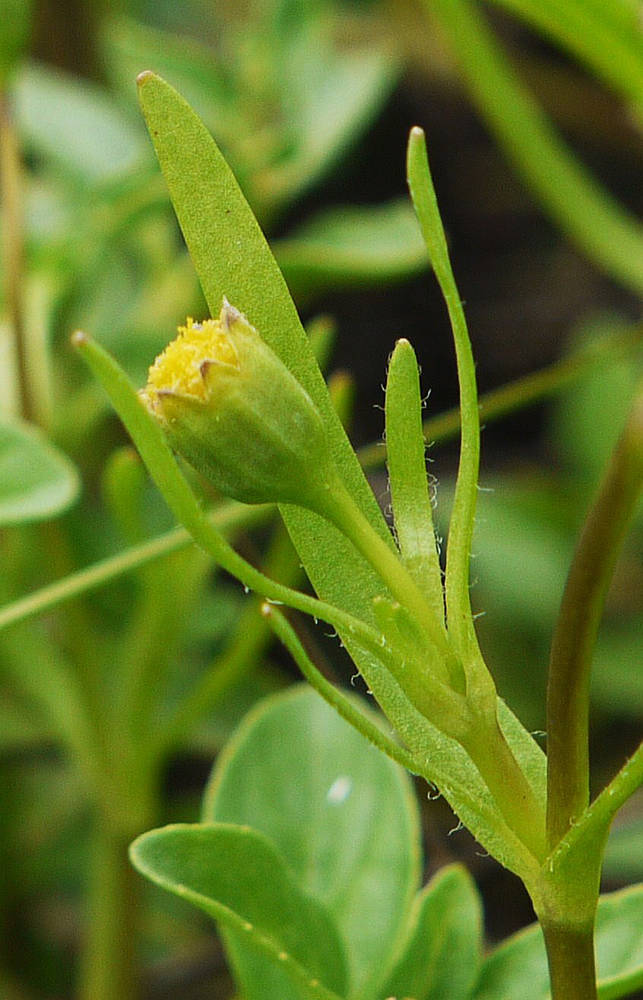Lasthenia glabrata
Lasthenia glaberrima
smooth goldfields, smooth lasthenia
glabrous.
linear, 8–60 × 0.5–4 mm;
margins entire;
tips blunt;
surfaces glabrous.
hemispheric or campanulate, 4–7 mm.
5–12, inconspicuous;
corollas 1–1.5 mm, yellow, included or slightly exceeding involucres.
3–30;
corollas 1–2 mm, yellow;
lobes 4;
stamens included;
styles included.
6–20; ? united, triangular;
lobes free;
tips acute;
surfaces glabrous or strigillose distally.
3–4 mm; black or grayish, strigillose, pappi of 5–10 fimbriate scales, 1–2 mm.
radiate;
peduncles 0.5–15 cm;
surfaces glabrous or minutely puberulent.
=10.
Lasthenia glabrata
Lasthenia glaberrima
Wet meadows, marshy areas, ditches, vernal pools. Flowering May–Jul. 50–400 m. Col, Sisk, WV. CA, WA. Native.
The short stamens and styles of Lasthenia glaberrima are indicative of a self-pollinating breeding system (Ornduff 1963, 1966). The leaf tips of L. glaberrima are often described as “blunt” (Chan & Ornduff 2006), but more than this, each blunt tip appears to consist of a small, specialized gland, perhaps functioning for water secretion. This structure is less obvious or absent in the leaves of other Oregon Lasthenia taxa. During growth early in the season, when submerged in water, the stem of L. glaberrima develops a brownish, wrinkled epidermis, in contrast to the smooth, green stem later produced aerially.
Kenton Chambers
- Local floras:
BC,
CA,
OR,
WA
- Local Web sites:
CalFlora,
CalPhotos,
Flora NW,
PNW Herbaria
WildflowerSearch
iNaturalist (observations)
USDA Plants Database
- LBJ Wildflower Center
- SEINet
- Plants of the World Online
- Encyclopedia of Life
- Wikipedia
- Google Image Search



